The Heechee Saga, also known as the Gateway series, is a series of science fiction novels and short stories by Frederik Pohl. The Heechee are an advanced alien race that visited the Solar System hundreds of millennia ago and then mysteriously disappeared. They left behind bases containing artifacts, including working starships, which are discovered and exploited by humanity.

Michael Diamond Resnick was an American science fiction writer and editor. He won five Hugo awards and a Nebula award, and was the guest of honor at Chicon 7. He was the executive editor of the defunct magazine Jim Baen's Universe, and the creator and editor of Galaxy's Edge magazine.
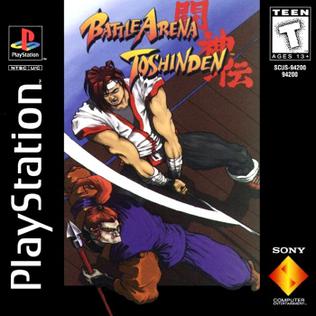
Battle Arena Toshinden, released as Toh Shin Den in Japan, is a 1995 fighting video game developed by Tamsoft and published by Takara for the PlayStation. It was one of the first fighting games, after Virtua Fighter on arcade and console, to boast polygonal characters in a 3D environment, and features a sidestep maneuver which is credited for taking the genre into "true 3D."

GamePro was an American multiplatform video game magazine media company that published online and print content covering the video game industry, video game hardware and video game software. The magazine featured content on various video game consoles, personal computers and mobile devices. GamePro Media properties included GamePro magazine and their website. The company was also a part subsidiary of the privately held International Data Group (IDG), a media, events and research technology group. The magazine and its parent publication printing the magazine went defunct in 2011, but is outlasted by Gamepro.com.

Accor Arena, also known as Bercy Arena, is an indoor sports arena and concert hall in the neighbourhood of Bercy, on the Boulevard de Bercy, in the 12th arrondissement of Paris, France. The closest Métro station is Bercy, which also serves the Finance Ministry.
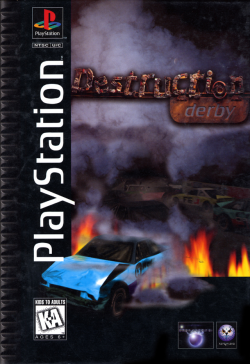
Destruction Derby is a 1995 vehicular combat racing video game developed by Reflections Interactive and published by Psygnosis for MS-DOS, PlayStation and Sega Saturn. Based on the sport of demolition derby, the game tasks the player with racing and destroying cars to score points. The developers implemented simulated physics to make the results of collisions easier to predict, and they kept the game's tracks small to increase the number of wrecks. Critics found Destruction Derby enjoyable and praised its graphics and car damage system, although the Saturn release received mixed reviews. The game started the Destruction Derby series, beginning with its 1996 sequel, Destruction Derby 2.

Martha Wells is an American writer of speculative fiction. She has published a number of fantasy novels, young adult novels, media tie-ins, short stories, and nonfiction essays on fantasy and science fiction subjects. Her novels have been translated into twelve languages. Wells has won four Hugo Awards, two Nebula Awards and three Locus Awards for her science fiction series The Murderbot Diaries. She is also known for her fantasy series Ile-Rien and The Books of the Raksura. Wells is praised for the complex, realistically detailed societies she creates; this is often credited to her academic background in anthropology.

Total! was a video game magazine published in the United Kingdom by Future plc. It was published monthly for 58 issues, beginning in December 1991, with the last issue bearing the cover-date October 1996. A "1993 Annual" featuring reprint material and a poster magazine were also released during the magazine's lifetime.

Destruction Derby 2 is a 1996 vehicular combat racing video game developed by Reflections Interactive and published by Psygnosis for PlayStation and Microsoft Windows. The sequel to Destruction Derby (1995) and developed by the same team, players race with the goal of earning points by damaging opponent cars. Standard races and matches based in arenas with the goal of remaining the last player driving are also available.

Wipeout is a 1995 racing video game developed and published by Psygnosis, originally released for PlayStation and DOS, followed by Sega Saturn the next year. It was a launch title for the PlayStation in Europe. Wipeout was re-released as a downloadable game for the PlayStation 3 and PlayStation Portable via the PlayStation Network in 2007.

The Need for Speed is a 1994 racing game developed by EA Canada, originally known as Pioneer Productions, and published by Electronic Arts for 3DO. It was later ported to other platforms with additional tracks and cars, including to MS-DOS, PlayStation, Sega Saturn, and Microsoft Windows in 1996, on which it was subtitled SE.
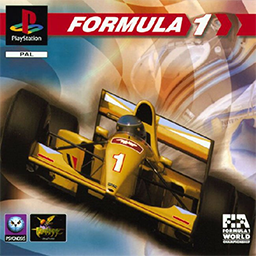
Formula 1 is a 1996 racing video game developed by Bizarre Creations and published by Psygnosis for PlayStation and Microsoft Windows. It is the first installment in Sony's Formula One series.

Worms is a 2D artillery tactical video game developed by Team17 and released in 1995. It is the first game in the Worms series of video games. It is a turn based game where a player controls a team of worms against other teams of worms that are controlled by a computer or human opponent. The aim is to use various weapons to kill the worms on the other teams and have the last surviving worm(s).
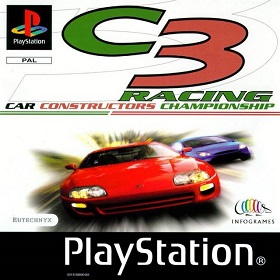
C3 Racing: Car Constructors Championship, released in Britain as Max Power Racing as a tie-in to the Max Power magazine, is a racing video game first released in December 1998, developed by Eutechnyx and published by Infogrames Multimedia for the PlayStation. The game allows the player to race in 11 locations around the world in a variety of licensed sports cars. It is the follow-up to 1997's Total Drivin.
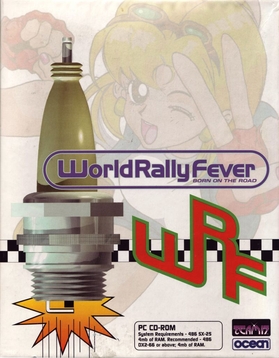
World Rally Fever: Born on the Road is a 1996 racing game developed by Split and Team17 and originally published by Ocean Software for MS-DOS. It offers timed stages where drivers navigate through challenging routes, often in off-road environments. It was later re-released by Sold-Out Software. World Rally Fever featured anime style art and characters which raced cart-like vehicles through various world-themed tracks, such as Scotland, France, the United States, Japan and several other nations.

Thunder Truck Rally is a monster truck racing video game developed by Reflections and published by Psygnosis where players select a monster truck or otherwise 4X4 vehicle equipped with monster truck tires and have the option of either racing or crushing cars in an arena.
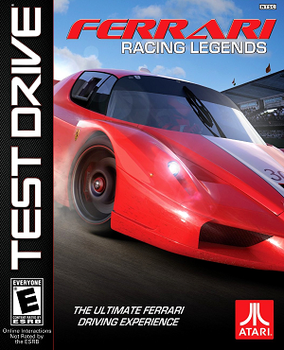
Test Drive: Ferrari Racing Legends is a racing video game developed by Slightly Mad Studios and published by Rombax Games under license from Atari for PlayStation 3, Xbox 360 and Microsoft Windows. The game is a departure from the semi-simulation open world sandbox-gaming style seen on Test Drive Unlimited and its sequel, and returns to closed circuit racing that was last used in Test Drive 6, and also resembling another racer called Le Mans 24 Hours, which was branded as a Test Drive title in the United States on some platforms.
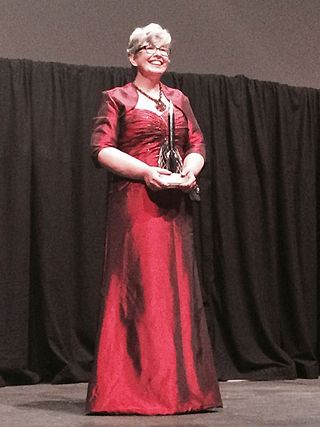
Ann Leckie is an American author of science fiction and fantasy. Her 2013 debut novel Ancillary Justice, which features artificial consciousness and gender-blindness, won the 2014 Hugo Award for "Best Novel", as well as the Nebula Award, the Arthur C. Clarke Award, and the BSFA Award. The sequels, Ancillary Sword and Ancillary Mercy, each won the Locus Award and were nominated for the Nebula Award. Provenance, published in 2017, and Translation State, published in 2023, are also set in the Imperial Radch universe. Leckie's first fantasy novel, The Raven Tower, was published in February 2019.

The Lost Vikings is a 1993 puzzle-platform game developed by Silicon & Synapse and published by Interplay. It was initially released for the Super NES, then subsequently released for the Amiga, Amiga CD32, MS-DOS, and Mega Drive/Genesis. The Mega Drive/Genesis version contains five stages not present in any other version of the game, and can also be played by three players simultaneously. Blizzard re-released the game for the Game Boy Advance in 2003. In 2014, the game was added to Battle.net as a free download emulated through DOSBox. In celebration of the company's 30th anniversary, The Lost Vikings was re-released for Microsoft Windows, Nintendo Switch, PlayStation 4 and Xbox One as part of the Blizzard Arcade Collection in February 2021.
Towing Jehovah is a 1994 fantasy novel by American writer James K. Morrow, published by Harcourt Brace. The book is about the death of God and the subsequent towing of his body across the Atlantic Ocean. In 1995 it received the World Fantasy Award for best novel, with two additional best novel awards. It was followed by two sequels in 1996 and 1999.


















